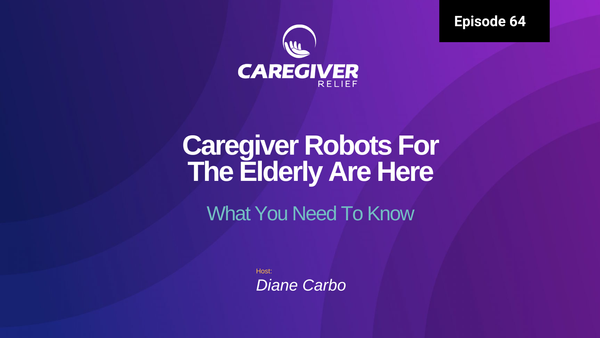What Is A Medicare Advantage? Buyer Beware
Medicare Advantage Plans are offering benefits that traditional Medicare Does not. They fail to educate on the out out pocket expenses and rationed care you will experience.

Traditional or original Medicare is a federal health insurance program designed for older adults. The minimum age for Medicare is 65 in most cases. However, there are special needs plans, Medicare Advantage plans, that cover younger adults with certain disabilities as well as people with end-stage renal disease (ESRD). There is an initial open enrollment period every year to join that type of program. There is now a big movement by government policymakers to push, Medicare Advantage Plans Part C. Also called MA plans.
Stand alone, traditional Medicare part A, is a hospital insurance plan funded by our taxes. These funds are placed in a medicare hospital trust fund. And it pays the hospitals directly for hospital care provided. With Original Medicare, you have the freedom to choose from any provider or hospital that accepts it. MA plans have participating providers and in network providers.
However, while they cover doctor visits and medical supplies, other covered services like long-term care are not included in their coverage plan, but there is coverage for a skilled nursing facility, should you need it. You can buy a Medigap policy - offered by private insurance companies - which covers what original Medicare does not.
Medicare part b coverage options is funded through the Supplemental Medical Insurance Trust Fund. This plan is funded by congress and the premiums paid for through the participants that pay for part b and not part c and d. Part b and d are prescription drug coverage plans. Medicare parts B and D both offer prescription drug coverage under different federally set guidelines. While Medicare Part B only covers select types of prescription drugs under specific conditions, Medicare Part D offers broader drug coverage.
Medicare, part b coverage and part d covers medications. These plans are so convoluted and difficult to understand. Typical government program. You have to know what medications your on and if it is covered by the plan you purchase. There are different tiers of medications. The trouble with these plans is, most seniors have many changes in their medications as they get older. I know for me personally, My part d coverage options did not include the pain patch the doctor prescribed for me. I only take 1 pill. A months supply of these patches was going to be $700.
Medication Coverage Under Medicare and Medicare Advantage Plans

I have been dealing with Medicare and Medicare care advantage plans for decades. I was aware that Congress made it clear that Medicare couldn't negotiate with pharmaceutical companies for prescription drug prices when it added a drug benefit to the program twenty years ago. Health care providers and many physician organizations have been arguing that if Medicare could negotiate prices. Millions of seniors would get a better deal for those that rely on the program for their medications. There is a pushing for the Inflation Reduction Act of 2022, which would allow Medicare to negotiate prices and tackle the issue of skyrocketing prescription drug costs.
New research reveals that seniors, especially women and those with diabetes and dementia, are most at risk of falling into the Medicare Part D prescription drug plan "donut hole." This coverage gap leaves vulnerable individuals exposed to high medication costs. To address this issue, experts recommend counseling these groups on cost management strategies, such as switching to alternative drugs or discontinuing non-essential medications. It is crucial to ensure that essential medications are not discontinued solely due to cost reasons, as this can have adverse effects on patients' health.
Let's talk about the Medicare Donut Hole and What's Changing
First, what exactly is the Medicare donut hole? Well, it's a coverage gap in the Medicare Part D program where beneficiaries used to have to pay the full cost of their medications. But don't worry, the donut hole has been gradually closing over the years thanks to the Affordable Care Act (ACA). However, even though it's closed, you'll still have to pay a portion of the cost while in the donut hole.
So, what will you pay now that the donut hole is closed? Currently, you'll pay 25% of the cost of your drugs while in the donut hole. But remember, this can vary depending on your plan.
During the donut hole, the way drug costs are covered changes too. Before entering the donut hole, your Part D plan covers the portion of the cost above your copay or coinsurance. But once you're in the donut hole, the bulk of the cost of brand-name drugs is covered by a discount from the manufacturer.
To reach the catastrophic coverage level and get out of the donut hole, you'll need to spend $7,400 in 2023. This amount includes both your out-of-pocket spending and manufacturer discounts. Once you're in the catastrophic coverage level, your drug costs will be much lower.
But remember, the donut hole threshold is higher in 2023, so you'll enter when your spending, plus your plan's spending, reaches $4,660. And you'll leave the donut hole when your spending, plus manufacturer discounts, reach $7,400.
So, even though the donut hole is closing, you'll still need to keep an eye on your medication costs and understand how they contribute to reaching the thresholds. And always remember, if you have any questions, feel free to reach out. We're here to help!
Medicare negotiation is the long-term solution to the problem we've been facing for years. This negotiation is the key to controlling prescription drug prices that have spiraled out of control. Our government policy makers have long ignored that seniors that take many medications, hit their "donut hole". This is the term that is given to seniors that become personally responsible for paying for their medications out of their own pocket. This has led to seniors on fixed incomes having to choose between eating, paying rent and paying for life saving medications.
So how would this negotiation process work? The U.S. Department of Health and Human Services would start by identifying the 100 most expensive drugs Medicare spends money on. Then, they would choose the first group of 10 drugs to have their prices negotiated. These drugs would have to meet specific criteria, such as not having any direct competitors and being on the FDA's approved list for many years.
However, there are some limitations to this process. Drugs that have generic equivalents or biosimilar products won't be included in the first round of negotiations. And only medications that have been on the market for a certain number of years will be eligible.
While this means that some of the most expensive drugs won't be addressed immediately, it's a step in the right direction towards making medications more affordable for Medicare beneficiaries and taxpayers. With millions of Americans relying on Medicare for their medications, it's time to harness the power of those numbers and negotiate for better prices.
When Will Drug Prices Go Down?

Are you wondering when drug prices will finally come down? Well, I have some bad news for you! Starting in 2026, the first round of negotiated prices will kick in for drugs under Medicare Part D plans. These are the prescriptions you usually get from your local pharmacy. As for medications covered under Part B, which includes things like doctor visits and certain outpatient services, the negotiated prices will go into effect in 2028. Here's the breakdown of the plan:
2026: A maximum of 10 drugs will be subject to negotiation.
2027: Up to 15 drugs will be negotiated.
2028: Another 15 drugs will be negotiated.
2029 and beyond: Each year, up to 20 drugs will be negotiated.
This means that over time, more and more drugs will be included in these price negotiations, leading to potential savings for consumers. So keep your eyes peeled, because relief from high drug prices is on the horizon! Most of us will never see the benefits of discounted drug coverage.
Medication Discount Drug Programs

I am going to recommend that you look into drug discount programs , like Single Care, Good RX or Mark Cuban's Cost Plus Drug company. These organizations have the ability to negotiate drug prices and many times offer much lower prices on your medications than what medicare pays under your own prescription plan.
Even the new law that everyone is so excited about only is allowing 10 prescription drugs to be negotiated for a lower rate.
So, bypass these government regulations and look into these discount prescription drug plans. You cannot use your insurance with these discount programs, but, the savings is worth it.
Medicare Part A and B provide resources to seniors, allowing them to maintain their health. While it can be expensive for some people who have limited incomes, those costs are offset by the wide range of medicare services such as preventive services like Annual Wellness programs, cancer screenings, vaccines, and chronic condition testing & management —which help keep medical expenses almost manageable in the long run.
Let's Talk About the Pros and Cons of a Medicare Advantage Plan.

Medicare Advantage, also known as Medicare part c, offers a different approach - with premiums paid to insurance companies such as Humana or Blue Cross instead of doctors & hospitals. This means that these organizations are given a your Medicare pot of money and then they have to pay their employees, and administration, and then pay the doctors and hospitals. And brokers that sell Medicare advantage plans make a hefty profit. They get a sum from the private insurance companies monthly for every month a client stays in that plan. The unintended consequence of trying to cut health care costs resulted in the creation of an entire industry that is trying to meet the government regulations to control costs. And in my opinion, it has failed miserably.
There are different types of medicare advantage plans. The main difference between a full medicare advantage plans or Health Maintenance Organization HMO and a Preferred Provider Plan (PPO) is the plan's network of providers.
A Medicare Advantage HMO Plan

A Medicare Advantage HMO plan, you'll need to use providers within the network for most of your care, but you'll have the freedom to seek out-of-network care in emergencies or when you're out of the plan's service area.
Medicare Advantage HMO plans are the most common type of Medicare Advantage plans, covering almost 60% of all plans. These plans offer all the benefits of Medicare Part A and Part B, plus additional perks like prescription drug coverage and vision and hearing care.
By using a specific network of doctors and hospitals, Medicare Advantage HMO plans can keep costs lower. You'll enjoy lower monthly premiums, along with lower copays and coinsurance. Plus, the primary care physician who coordinates your care will have a comprehensive understanding of your medical history.
However, it's important to note that with HMO plans, your options for seeking care may be limited to the network. Unless it's an emergency, you'll need a referral from your primary doctor to see a specialist. This may not be ideal for everyone.
If you're someone who is generally healthy, doesn't often need medical care, and doesn't mind getting a referral for specialist visits, a Medicare Advantage HMO plan could be a good fit for you. It's worth considering if you're looking for a more affordable health plan option.
A Medicare Advantage PPO Plan

Are you looking for a flexible Medicare plan that lets you choose your own providers? Consider a Medicare Advantage PPO plan! With this type of plan, you have the freedom to see doctors and hospitals in and out of the network, giving you more options for your healthcare. Plus, PPO plans often include prescription drug coverage and other benefits like dental, hearing, and vision.
Unlike other Medicare Advantage plans, PPOs don't require a primary care physician or referrals for specialist visits. You'll still get lower costs if you stick with in-network providers, but you're not limited to them.
To help you understand how Medicare PPO plans work, the benefits they offer, and how to enroll, check out their guide. It's important to note that costs and availability of plans may vary depending on where you live, if you plan to travel and if you see many specialists.
A Medicare PPO plan might be a great fit for you if you want the flexibility of choosing your own providers without referral restrictions or being tied to a provider network. You'll have the option to seek healthcare outside of the network, but keep in mind that you may have to pay more for those services. Plus, many PPO plans include drug coverage, so you don't have to purchase standalone drug coverage separately.
So, what exactly is a Medicare Advantage PPO plan? It's an alternative to Original Medicare that gives you access to Medicare-covered services and additional benefits like dental, vision, and hearing. PPO plans have a network of preferred providers, but you're not limited to using only in-network services.
PPO plans work by combining the advantages of managed care and fee-for-service plans. You'll have access to lower costs and copays with preferred providers, but you can also choose doctors and facilities outside of the network. Keep in mind that your out-of-pocket costs may be higher for out-of-network services.
With a PPO plan, you'll have all the benefits of Medicare Part A and Part B, including inpatient hospital care, home health care, and preventive services. Many PPO plans also offer extra benefits that Original Medicare doesn't cover, such as routine dental, hearing, and vision exams. Some plans even include prescription drug coverage.
It's important to weigh the advantages and disadvantages of a Medicare PPO plan before making a decision. On one hand, you'll have the flexibility to choose providers and larger networks compared to HMO plans. Referrals for specialists are generally not required. On the other hand, you may have higher out-of-pocket costs and restricted choice for out-of-network providers in certain cases.
Ultimately, finding the best Medicare Advantage plan for you depends on your financial and medical situation, as well as your personal preferences. If you value the ability to choose your own providers and can handle higher out-of-pocket expenses, a Medicare Advantage PPO plan may be the perfect fit for you.
Summary
An HMO is more restrictive and only allows you to receive care from in-network providers. If you like to travel, this makes obtaining health care an issue. Explore options if you plan to travel out of your local area. While PPOs offer more flexibility and allow you to get care from both in-network and out-of-network providers.
One Medicare advantage plan may be a Health Maintenance Organization (HMO) often require referrals for certain services, whereas PPOs do not. Another key difference between medicare advantage HMOs and PPOs is that medicare advantage HMO plans typically have lower premiums than medicare advantage PPO plans.
Private Fee for Service Medicare Advantage Plan

Looking for a Medicare plan that gives you freedom and extra benefits? Consider Medicare Fee-for-Service.
Fee-for-service plans are different from bundled payment models. Instead of focusing on quality, these plans encourage providers to supply more services. But times are changing. More and more people are shifting towards value-based payment methods that reward providers for quality care, not quantity.
So, who should get a Medicare Fee-for-Service plan? It's a great choice if you want unrestricted access to providers, want to pay for services as you receive them, and want extra benefits as a Medicare Advantage Plan.
What exactly is a Medicare Fee-for-Service plan? It's a type of Medicare Advantage Plan offered by private insurers. These plans provide all the benefits of Original Medicare, plus additional benefits decided by the insurer.
With a Medicare Fee-for-Service plan, you pay for each service received from a healthcare provider. Medicare covers some of the costs, but charges are billed individually. You can go to any doctor or hospital, but you'll pay more for out-of-network providers.
PFFS plans offer all the benefits of Medicare Parts A and B, plus additional benefits like dental and vision exams. Some plans even include prescription drug coverage.
Advantages of Medicare PFFS plans: flexibility and control over your medical providers, no need for a primary care doctor or referrals, and some plans include prescription drug coverage.
But there are also disadvantages. Providers can choose to no longer accept your PFFS plan, and you may owe more if you use out-of-network providers.
Who's eligible for a Medicare PFFS plan? If you're enrolled in Original Medicare Parts A and B and there's a plan available in your area, you're eligible. Eligibility also extends to those who are 65 or older, have a qualifying disability, have end-stage renal disease, or have received SSDI or RRB disability insurance payments.
What about costs? Medicare PFFS plans have a monthly premium, in addition to your Medicare Part B premium. You're also responsible for copayments or coinsurance. The monthly premium is generally lower than Medicare Supplement plans, making it a more affordable alternative. Maximum out of pocket expenses under a Medicare PFFS plan will vary depending on the company providing this plan. There are some plans that have no limit on out of pocket expenses. I suggest that you ask for that information, to help you make an informed decision on this type of Medicare Advantage Plan.
So, if you want freedom, extra benefits, and a more affordable option, Medicare Fee-for-Service might be the plan for you.
Pros of PFFS Medicare Advantage Plan
You can choose virtually any doctor that accepts medicare without needing a referral from a primary care physician. No network restrictions. You have the flexibility to seek care out-of-network if necessary, as long as medicare approves the charges. Most plans include prescription drug coverage.
Cons of Private Fee-for-Service Plans include:
• You may pay more for services than what medicare covers
• May be limited access to specialists in your area. Doctors done want to deal with the strangulating government regulations and low reimbursement. This is why so many doctors are moving to concierge medicine.
• Out-of-pocket costs can be higher than other Medicare Advantage plan types because there are no maximum out-of-pocket limits.
Most medicare advantage plans pay for over the counter drugs. While over the counter drugs are not covered under medicare part a or part b, medicare advantage plans can cover some over the counter medications, as long as they have been prescribed by the doctor. This coverage is usually limited to specific items and may be subject to copayments. It's important to check with your medicare advantage plan provider for their exact rules regarding over the counter drug coverage.
It's difficult to leave a Medicare Advantage plan once you've been in it for 12 months - unless you're living in Maine, Massachusetts, New York or Connecticut. Things get even more tricky if the applicant has pre-existing conditions that can be denied coverage by Medigap plans resulting in costly deductibles and co-pays of up to 20%. So take caution when choosing your healthcare options! Basically, this is a managed care program. They have different rules and limited service areas. The insurance companies supplement this medical insurance with copays and limited drug coverage part two.
The primary advantage is the monthly premium, which is generally lower than medicare supplement insurance plans, known as Medicare supplement plans. The top disadvantages are that you must use their provider network and the copays can nickel and dime you to death.
In fact, the copays for the special needs plans for services like therapies , like PT , OT and Speech therapies are meant to discourage usage of these benefits. It is basically private fee for services...meaning you are responsible for paying out of pocket for these services. They will not flat out deny you treatment, they just make it your responsibility to pay for what your doctor is recommending. Original medicare doesn't cover or is limiting services and treatments , making it the choice of the patient if they want to pay out of pocket for treatments ordered by their physician.
If you think I am wrong, talk to someone that has a medicare advantage plan. Sadly, these special needs plans are medicare advantage programs. They discourage people who are sick, by the way they structure their copays and deductibles. This is done by design and denies those access to the full benefits of original medicare.
Here's an example...
Many have co pays at $35 a session. If a doctor orders 3 sessions a week of a therapy to improve function, that equates to $420 dollars for one month of needed therapy. This is for individuals that are unable to work and live on a severely limited income. They are forced to choose to eat and pay rent or receive care ordered by their doctors.
Later in this lesson, I am going to discuss how we have been experiencing health care rationing for decades. I know, because I worked for the very first medical review companies in the country that started this movement toward managed care.
I can't tell you how many times I have had clients tell me how excited they were to be able to belong into a medicare advantage plan. Later they call me and tell me that their present primary care physician is now an out of network. Even though they checked with the list prior to joining. Plans change doctors often. While many doctors are on many provider networks, their primary care doctor is at capacity for that specific plan. And they are forced to seek a new doctor
And most patients do not realize that they had to get prior authorization for their doctor visits for an out of network provider. This has caused problems with healthcare providers and their long term patients. Many of these health care providers most likely belong to the network, but have long waiting lists for new patients of many of the medicare advantage plans.
I hear from medical providers that their patients believe they still have original Medicare when they join a Medicare Advantage part c plan. They don't understand that they have given away their rights to coverage options. Understand It's difficult to leave a Medicare or medicare Advantage part c plan once you've been in it for 12 months - unless you're living in Maine, Massachusetts, New York or Connecticut.
Things get even more tricky if the applicant has pre-existing conditions that can be denied coverage by Medigap, resulting in costly deductibles and co-pays of up to 20%. So take caution when you join a medicare advantage plan.
More cons to what most plans for medicare advantage part c include:
Additional costs for out-of-network services if needed.
Preauthorizations/ Prior Authorizations Delay Treatment
Pre authorizations are needed for everything from referrals to specialists to admission to a skilled nursing care facility and hospice care. Preauthorizations delay treatment and even testing for diagnosis. A staggering number of physicians agree that prior authorizations - the necessity for a payer to approve treatments and services beforehand - is resulting in negative clinical outcomes. With this view shared by 92% of surveyed doctors, the American Academy of Family Physicians dubs it "the number-one administrative burden". It's clear there are lasting implications on healthcare systems due to these requirements. And the concerns of the doctors has gone unheard.
This is our government limiting our health care options and making the consumer responsible to privately pay for treatments, medications and services. I encourage you to listen to how health care rationing has been going on for decades. Even our original medicare is rationing care. I know, It is negatively impacting me personally. I'll share that later in this episode.
As I was doing research for this book, I came across an article that was discussing the medicare part how doctors do not want to accept original medicare because the reimbursement rates are so low. This was an article from 2012. I can tell you, it worse now. In fact, doctors visits for original medicare are lower now for a visit, than in 2012. This has resulted in a doctor allotting only 15 minutes per visit. This time will decrease to 10 minutes as reimbursement for doctors visits continues to decrease. Doctors are being paid less, and expected to have more staff to meet the government regulations.
The Downside to Medicare Advantage Programs

I know Medicare Advantage Plans sounds like a great way to get all your necessary coverage in one place. A Medicare advantage plan covers Part A, B, and D into one plan plus more extra benefits for vision, hearing and hearing aids and even dental services; often these extra benefits are offered with little or no monthly premiums.
But it's important to note that medicare advantage plans may not cover all medical care when you become ill. This leads to unexpected out of pocket costs. So, it is important to be sure to research any additional details before signing up so that you're not caught unawares by nasty surprises down the line! and trust me, there will be many.
Deciding between original Medicare and a Medicare Advantage part c plan requires careful consideration. Both offer the same benefits, but there are differences in coverage, access to care providers, and costs that can make one better suited for you than the other.
Traditional plans give consumers more options when it comes to where they receive their medical services while an MA plan may have different standards of what is considered "medically necessary". They entice clients with the benefits for these "extras" that original medicare doesn't cover. While these additional benefits are enticing, Doctors are growing increasingly concerned that misleading advertising is leading patients to believe they can keep their same doctor after shifting providers. Specialists in particular worry these exaggerated claims may have a long-term impact on healthcare for all.
Consumers should take into account three elements before making a decision! Cost of the covered services, access to care or the service area and cost of care to the consumer, in other words your out of pocket costs.
Freedom of Choice with Traditional Medicare
With traditional Medicare, you have the freedom to choose almost any doctor or hospital that accepts it - no need for referrals and prior authorizations! However, if you opt for a Medicare Advantage plan instead of regular Medicare, restrictions do apply. You'll likely be required to get referrals from either your primary care physician or specific doctors within the plan's network in order to access more complex treatments.
With Medicare Advantage, it's important to note that you won't be able to purchase a supplemental policy as one can with Medigap. This means out of pocket expenses such as copays and deductibles are not covered. And if you travel outside of the service area, this is considered to out of network. Services may or may not be covered. This means more out of pocket expenses for the patient. so , if you travel, you need to be aware that if a hospital admission or even a non urgent care visit happens on vacation, understand you may incur the cost of those services provided.
There is good news though. there’s an upper limit for cost sharing at $7,550 maximum per year in order for those enrolled in Medicare Advantage plans. Essentially there's no way around these limitations so take them into consideration before signing up!
Let's Talk about Out Of Pocket Expenses
When it comes to Medicare, understanding your coverage options is key. One important factor to consider is your out-of-pocket costs. With Original Medicare, there's no annual out-of-pocket limit, meaning you could be responsible for paying a hefty amount in medical expenses. That's when Medigap plan, also known as Medicare Supplement plans.
Retirement can be tough on your finances, especially when it comes to healthcare costs. While Original Medicare is a great option for affordable coverage after the age of 65, it doesn't cover everything. That's where Medicare Supplement insurance, also known as Medigap, comes in.
Medicare Supplement Policy/Medigap Plans
Medigap policies are designed to fill the gaps in Original Medicare's coverage. They help with costs like copayments, coinsurance, deductibles, and other out-of-pocket expenses that can add up quickly.
To be eligible for a Medigap policy, you need to have both Parts A and B of Original Medicare. However, if you have a Medicare Advantage policy, you won't be able to get a Medigap plan. Keep in mind that Medigap policies don't include prescription drug coverage.
If you're living on a budget and worried about the costs of Original Medicare, a supplement plan with an annual out-of-pocket maximum limit could be a great option for you. This type of plan can help alleviate the financial burden by covering all remaining healthcare costs once you reach your maximum for the year.
There are different types of Medigap plans available, but only Plans K and L have annual out-of-pocket maximum limits. Plan K has a maximum limit of $5,880.00 for 2020, while Plan L's limit is $2,940.00.
The cost of your Medigap plan will depend on when you enroll and where you live. It's important to note that not all plans are available in every state. Different insurance companies offer different plans, so you'll need to do some research to find the right one for you.
For retirees who frequently visit healthcare providers or need regular services, out-of-pocket expenses can quickly add up. That's why having a Medigap plan with an annual maximum limit can make a big difference financially. Consider Plans K and L to ensure you have the coverage you need without breaking the bank.
What is Your Annual Out of Pocket Expenses on Your Medicare Advantage Plan?
Medicare Advantage plans, offered by private insurance companies, have an annual out-of-pocket maximum to protect you from high costs. While these plans have some flexibility in setting their premiums and benefits, they are required by the government to have a maximum out-of-pocket limit that cannot be exceeded.
The out-of-pocket maximum for Medicare Advantage plans in 2023 is $7,550 for in-network expenses and $11,300 for combined in-network and out-of-network expenses. It's important to note that some plans may set their own voluntary out-of-pocket limits, as long as they are lower than the government maximum.
So, what happens when you reach the maximum out-of-pocket limit? Your plan typically covers all covered services for the rest of the year, alleviating the burden of out-of-pocket costs.
When it comes to what counts toward the out-of-pocket maximum, generally, your coinsurance, copays, and deductibles for Medicare Part A and Part B will contribute to reaching the limit. Monthly premiums for Part B and any plan premiums you may have don't count.
It's important to remember that Medicare Advantage plans do not pay 100% of your medical costs. Like most health insurance, they have a cost-sharing structure, meaning you'll still be responsible for paying some portion of the costs. However, the plan will cover the majority of the expenses for covered services.
To further manage your medical costs, you may consider a Medicare Supplement insurance plan. These plans can help cover your out-of-pocket costs under Original Medicare, but they do not work with Medicare Advantage plans. Be aware, the out of pocket expenses will increase every year, to keep up with the ever increasing health care costs.
So, whether you're new to Medicare or exploring your coverage options, it's crucial to understand the out-of-pocket costs associated with Medicare Advantage plans and how they can protect you from high medical expenses.
Health Care Rationing
It may come as a surprise to some, but healthcare rationing has been taking place in the United States for years - long before Obamacare became law. This doesn't mean that Americans need to fear an abrupt shift into socialized medicine or universal coverage either; it's merely evidence of how access and resources have slowly been relegated over time.
Let's discuss the History of Health Care Rationing
As healthcare costs soared, businesses and the federal government felt a mounting pressure to find cost effective solutions. Health insurers responded by introducing innovative health insurance options such as health maintenance organizations and preferred provider organizations. This was to manage care while controlling spending. This new approach is known as managed care.
Most Americans are familiar with the managed care health plans like HMO plans, Preferred Provider Organizations offered by private insurance. Programs such as Medicare Advantage and Medicaid are managed care plans.
However, healthcare rationing is an underlying factor of these plans that often goes unnoticed. Instead of a blatant 'no', this system can be more subtle; presented either through restricted access or cost barriers for medical services needed but not included in the fixed amount of the plans services. Consequently, many individuals still struggle with inadequate or unaffordable care despite being insured, emphasizing the need for reform within our current healthcare system
In a perfect world, everyone would have access to the healthcare they need. Unfortunately, we live in a society where healthcare is treated like any other commodity and money speaks more loudly than human needs: doctors offer their services for salaries and pharmaceutical companies sell costly drugs as part of their business model – otherwise they wouldn't remain viable.
But it doesn’t have to be this way! People argue that basic medical treatment should be exempt from these constraints , something people can receive without restrictions regardless of financial or social standing. Yet, even the United States has its own limitations when it comes down to providing basic necessities such as food and shelter; so what hope do citizens have for unrestricted access to public healthcare?
Seniors and Medications Under All Plans
We still have 1 out of every 5 children going hungry in this country. For decades, seniors have had to choose between purchasing medications or buying food when they hit their donut hole in their prescription drug coverage. From October to Jan 1, many seniors do with out life saving medications or do not take as directed to stretch their medications until their prescription drug coverage kicks in again.
Despite the necessity of food and shelter, many people struggle to secure these basic needs due to financial constraints. Resources are often not enough as it requires careful budgeting as many may make a few dollars over the requirements to qualify for these services.
Similarly, while vital health care options exist they come at a hefty price that may be beyond reach for those with less means - leading us back into rationing territory once again.
Yet despite its issues, healthcare rationing can often lead to wiser spending decisions so we don't squander our limited resources on treatments which are unnecessary or wasteful; therefore making then an unfortunate yet unavoidable evil in order to protect public funds from mismanagement. Here in lies the problem. government policy makers have stepped in and interfered in the doctor patient relationship. Government policy makers are making decisions on what is deemed "medically necessary" and require constant documentation from trained medical professionals on every little thing.
I have been an RN for 50 years. I live with chronic pain from the years of nursing. I am unable to take pain medications due to a sensitive stomach. So, I use interventional pain management procedures to avoid pain medications. That is the purpose of interventional pain management. To provide relief from pain to decrease or prevent the use of pain meds.
Government Policy Makers are Dictating Our Care, Not Out Doctor
Our government policy makers, in their infinite wisdom, have now limited treatments to once a year per body part. For me, that is unacceptable. You see, I have these procedures to manage my pain, I need these procedures to my lower back 3 and sometimes 4 times a year. Imagine my surprise when my doctor told me he would order me pain medications to get me through until my next procedure. When he realized I was unable to tolerate oral pain meds, he ordered my pain patches. These pain patches were going to cost me over $700 under my present prescription drug coverage, under my Part d plan. That was for 1 month. 4 patches. Of course, I am unable to afford that as an ongoing option to treat my pain.
For those that are not aware of what pain patients go through, I will tell you. My oldest son, was injured in the Army. He developed a severe pain condition that even pain meds would not help at times. He was constantly accused of being drug seeking and was sent to drug rehab to get him off pain meds. He was then sent to pain management to find options to alleviate his pain without medications. So, you can imagine my outrage when I was offered pain medications. I know the cycle. And we have millions with chronic pain that are suffering because prescriptions for pain medications are limited. Once again, government oversight is interfering with the doctor patient relationship, leaving many to seek pain relief from drugs bought on the street.
Many view healthcare rationing as a potential consequence of restructuring the U.S.'s current system, but it's already happening in America through tactics like limited drug formularies and cost-sharing measures. Managed care plans have rules that manipulate access to vital treatments by requiring prior authorization or referrals, while rising out-of-pocket costs prevent those who can't afford them from receiving necessary medical attention - all forms of rationed healthcare right under our noses!
Know the Details of Your Medicare Advantage Plan
Knowing the details of your health plan and rationing processes can provide you with powerful protection. By being aware of what's covered, and how much it might cost, you'll be able to receive necessary care while preventing over utilization - keeping medical costs low! Of course, when you have a government run system that does not consider the doctor's education and their relationship with their patients, herein lies another problem. Doctors are beaten down with government interference. Hospitals are closing. We have fewer teaching hospitals. We are now experiencing a doctor and specialist shortage.
Let's talk about Why This Rationing of Care is Happening Now
The Covid-19 pandemic has increased financial pressure on Medicare, the federal health insurance program for millions of senior citizens. With a booming elderly population and rapidly decreasing payroll taxes stemming from job loss during the crisis, this vital system is struggling to remain financially secure amidst soaring spending costs. We also have another unexpected crisis. For he first time ever, we have more seniors than youth , in the world. And we have over 7 million able individuals in this country , age 18 to 45 , that have not returned to the workforce. To add insult to injury, measures like the 2021 CARES Act only compounded these issues by drawing $60 billion out of the Medicare trust fund - leaving many wondering how it can continue providing quality care while keeping afloat in an uncertain future. Medicare is expected to become insolvent by 2026. This means the government will need to fund this program. Meaning an dramatic increase in our taxes.
As a nurse that has worked on both side of the fence, in the insurance industry and in the hospital, I can tell you that the doctors patient relationship is impacted. Doctors are no longer in charge of our health care. They no longer are able to practice medicine. Government policy makers are making decisions that are constantly undermining our medical professionals, and physicians across America. Most have become disgruntled and dissatisfied with their profession. In fact, according to a recent survey from the Physicians Foundation, only half of doctors are content in comparison to 79 percent of other US workers who express job satisfaction. The heart-wrenching truth is that our healthcare providers are turning away from their calling and turning toward greener pastures . This will continue if nothing changes soon - leaving us without necessary support when we have a growing aging population.
You might also like this article:







